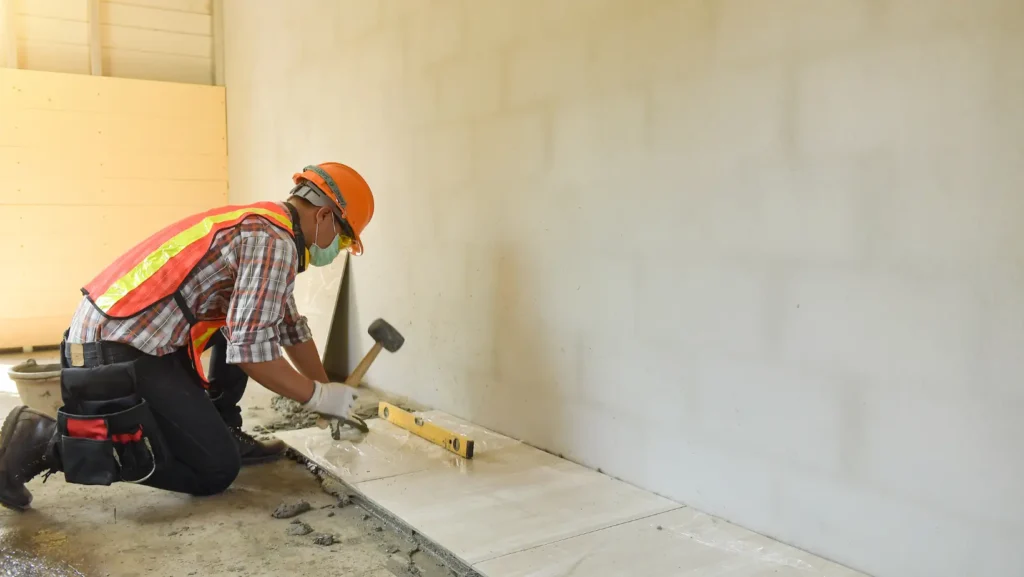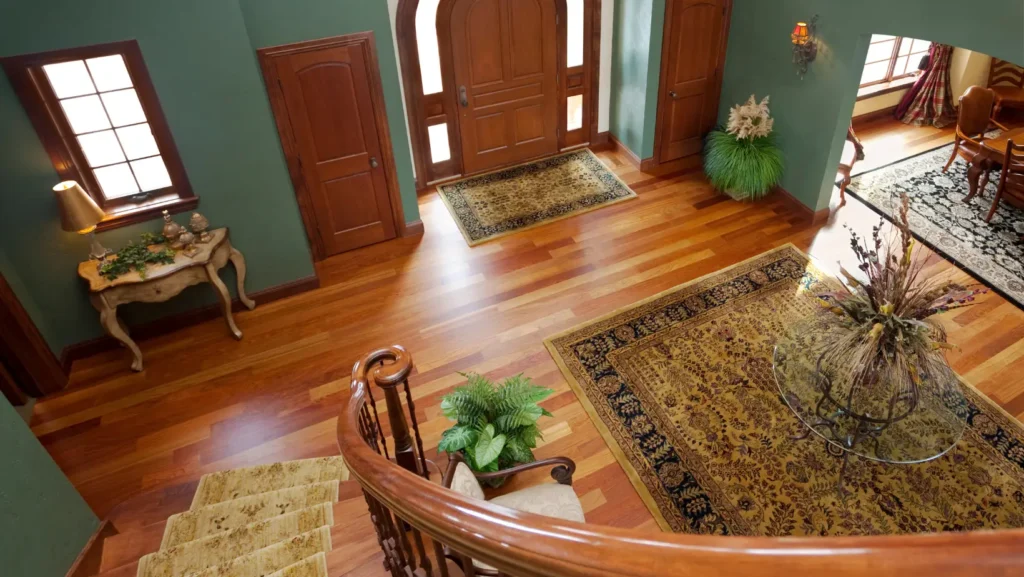Summary – The last thing you want to do just after installing tiles is to walk on them with your shoes or place heavy furniture on them. Walking on the tile too soon will result in tiles shifting, popping up, or drying incorrectly.

It’s exciting to finally have new tile installed in your home, whether it’s in the bathroom, kitchen, or another room. You may be eager to walk on it as soon as it’s installed, but it’s important to be patient and give the tile time to properly cure before walking on it.
Walking on tiles too soon can cause problems that may be costly to fix. In this blog post, we’ll explore what can happen if you walk on the tile too soon and how to properly care for your new tile installation.
What Happens If You Walk On A Fresh Tile Too Soon?
- Damage to Tile: Freshly installed tile is not fully cured, which means it is still soft and prone to dents and scratches. Walking on the tile before it is fully cured can leave marks or imperfections that are difficult, if not impossible, to remove.
- Damage To Grout: Grout is a porous material that is used to fill in the gaps between tiles. It needs time to fully cure before it is ready to withstand the weight and pressure of footsteps. Walking on grout that is not fully cured can cause it to crack or become discolored, which can affect the overall appearance of the tile installation.
- Possible Cracking or Warping: This is especially true for large tiles or tiles that are laid over an uneven surface. The weight of footsteps can cause the tiles to shift or become misaligned, which can lead to cracks or warping.
When can I walk on a Newly Tiled Floor?
The answer isn’t always straightforward, as there are several factors that can affect the curing time of tile and grout. These include:
- The Type of Tile and Grout: Different types of tile and grout can have different curing times. For example, ceramic tiles may take longer to cure than porcelain tiles, and epoxy grout may take longer to cure than cement-based grout.
- The Thickness Of The Tiles: Thicker tiles may take longer to cure than thinner tiles. This is because the weight of the tile can affect the curing time and the thickness of the adhesive or mortar used to install the tile.
- The Humidity and Temperature Of The Room: Tile and grout can take longer to cure in humid or cold environments. If the room where the tile is installed is particularly humid or cold, it may take longer for the tile and grout to fully cure.
In general, it’s a good idea to give the tile and grout at least 24 hours to cure before walking on it. However, it’s best to follow the manufacturer’s recommendations for the specific type of tile and grout you are using. They will provide specific curing times based on the specific product.
If you must walk on the tiles immediately after installing, perhaps due to an emergency, lay down a clean piece of plywood across the top of the floor. This is not a completely safe measure, but it can help reduce the tiles’ damage.
Also, Keep your shoes off when walking on your new floor until you’ve ensured the floor is completely dry. Otherwise, you risk damaging the finish by scraping against one of the tiles with your shoe.

Tips for Determining When The Tile Is Ready to be Walked on
If you’re not sure when it’s safe to walk on your new tile, here are a few tips to help you determine when it’s ready:
The Knock Test
Compared to the cement under your tiles, which is not exposed to air, the thinset at the sides dries significantly more quickly. So, never assume that your tile is dry by checking the sides only.
The knock test is an excellent way to gauge how well your mortar is in place. However, never conduct this test before waiting at least 24 hours.
To get started;
- Put your knuckles on the tile and tap it.
- The mortar is not dry if the knock produces a hollow sound.
- The mortar is dry if the knock sounds solid.
- However, even if the mortar seems dry at the edges and joints, it may still be moist underneath the tiles.
Here are other methods to determine when your tiles are ready to be walked on
- Test the Grout: Grout is typically the first thing to fully cure after a tile installation. To test the grout, try pressing on it with your finger. If it feels firm and does not indent easily, it is likely fully cured.
- Check the Adhesive: If you are using adhesive to install the tile, you can test its curing time by pressing on the tile with your finger or a coin. If the adhesive feels hard and does not give under pressure, it is likely fully cured.
- Wait for the Recommended Curing Time: It’s always a good idea to follow the manufacturer’s recommendations for curing times. They will provide specific times based on the specific product you are using, so be sure to follow these guidelines to ensure your tile is properly cured.

Can I walk on the Tile before Grouting?
It’s a common question we get here at the tile store: The answer is usually no for a few reasons.
- First, tile is porous and can absorb water, leading to staining or discoloration.
- Second, walking on the tile before grouting can cause cracks or chips.
- Finally, tile is slippery when wet, so it’s best to wait until the grout is dry before walking on it.
What Happens if You Grout Before Thinset is Dry?
Grout is a porous material that is used to fill the spaces between tiles, while thinset is a bonding agent that is used to adhere the tile to the surface. If you grout before thinset is dry, the thinset will not be able to adhere to the grout properly. This can cause the grout to crack and fall out, which can damage your floors or cause other problems like discoloring and staining your tiles.
Caring for Your New Tile Installation
Once your tile is fully cured, it’s important to properly care for it to ensure its longevity. Here are a few tips for maintaining the appearance and longevity of your new tile installation:
- Clean Regularly: Dirt and debris can accumulate on the surface of the tile, which can lead to scratching and discoloration. To prevent this, be sure to regularly clean the tile with mild detergent and warm water. Avoid using harsh chemicals or abrasive cleaning tools, as these can damage the tile.
- Protect the Grout: Grout is prone to staining and discoloration, especially in areas with high traffic or moisture. To protect the grout, consider sealing it with a grout sealer. This will help prevent staining and make it easier to clean.
- Use Rugs or Mats: Rugs and mats can help protect the tile from scratches and wear and tear, especially in high-traffic areas. Consider placing them in front of sinks, doors, and other areas where the tile may be more susceptible to damage.
FAQs On What Happens If You Walk On Tile Too Soon
Can You Walk on Tiles After 6 Hours?
After completing your tile installation, you must wait at least 24 hours before walking on your tiles. This allows the grout to set and dry properly so that it can do its job of filling in the spaces between the tiles and sealing them. If you walk on the floor too soon, you risk damaging the grout and tiles.
How Long After Tiling Can you Put the Furniture Back?
.After you have tiled, you should wait until the tiles are completely dry and can handle heavy equipements before putting any furniture back on. This could take at least 26 – 48 hours

